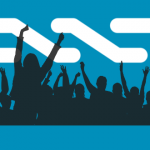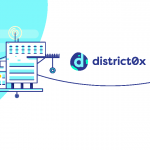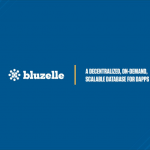Swarm City is the first truly decentralized peer to peer economy, enabled by the Swarm City (SWT) token, running on the Ethereum blockchain.
Swarm City removes third parties from transaction and enables complete peer to peer commerce – without banks, without credit card gateways, without central servers, and without third parties such as Uber, Airbnb and many more organizations, that practically do very little, but usually take a big chunk of the transaction as a fee for their “service”. A part that Swarm City plans to eliminate, enabling the transaction between two parties in a safe and trusted way, without any third party.
This is possible because it runs on the Ethereum Network (decentralized and distributed network of computers) that is backed and secured by cryptography and mathematics, guarantees peer to peer transactions and completely removes the need of a third party. The Ethereum blockchain plays the role of the third party and it does it much cheaper – for just a fraction of the price, measured and known as gas fee.
Swam City will be a platform that several brands (people who run a ‘hashtag’) can provide services on, but where a single person can also just provide services solo if they choose to build a reputation for themselves or add reputation on a brand they choose to join within the Swarm City ecosystem.
It is entirely open source, both in its development as in its approach, so everyone is welcome to join.
HOW IT WORKS.
Users can interact on a private and secure messaging channel (similar to twitter but with sophisticated features), and exchange Swarm City Tokens (SWT), a cryptocurrency minted to exchange between users for services.
Once a service offered in a so called ‘hashtag’ gets a critical mass, there will be a full-featured and dedicated frontend developed for it, so that the best user experience can be offered.
Swarm City also has a built in reputation system which lets you know who you can trust. Every user and app builds reputation over time as they transact with others on the platform.
DEVELOPMENT.
Swam city is being developed in three stages:
- TERMINAL.
The Swarm City Terminal is the starting point of the user journey in Swarm City. It serves as the main entry screen into the Swarm City ecosystem whereby you create your Swarm City citizen identity. Users create their profile using a username, password and picture.
Terminal is also the foundation for transacting in future Swarm City projects. Upon entry, all users create a digital wallet. This wallet is used to view, store, send and receive the tokens you own. SWT is exchanged directly between users over the Ethereum blockchain; no need for a middelman.
2. BOARDWALK.
Once you leave the Terminal, which you used to enter Swarm City and set up your identity, you find yourself on the Boardwalk. Boardwalk was released on June 15, 2017. It enables users to create requests and respond to them, and make and execute deals with Swarm City Tokens (SWT).
This is where commerce begins in Swarm City. It’s where newcomers meet, get acquainted with the city’s structure and its citizens. Right here the first relationships and reputations are minted, the first deals are made. Boardwalk provides a simple, intuitive system for participating in Swarm City’s peer-to-peer sharing economy.
Hashtags.
The release of Boardwalk introduced the very first Swarm City hashtag, called #pioneer. A hashtag is several things. First of all, a hashtag is an individual market within the Boardwalk marketplace where people go to find each other, transact value, and gain reputation in the context of that market. This example has been used many times, but #needaride could be a ridesharing context, and riders and drivers would find each other there to communicate and transact.
On a deeper level though, hashtags are smart contracts. When paired with a blockchain, smart contracts allow for completely decentralized commerce. Each hashtag automatically performs commerce functions under certain conditions; for example holding funds, paying out funds, and creating reputation tokens.
So when a user posts a request, the hashtag automatically pulls the payout amount selected from the requester’s wallet, and puts it into the smart contract. And when the requester acknowledges in the app that the deal was completed as expected, the hashtag automatically sends those same funds to the service provider and mints reputation tokens for each party. These automatic functions take the place of escrow agents and payment processors, and make transacting in Swarm City trustless and decentralized.
The Boardwalk interface shows popular hashtags based on a user’s geolocation. If a user clicks on the hashtag, it will take the user to a list view of every offer and request that has been made on that hashtag.
Let’s take #ridesharing as an example:
- Clicking on #ridesharing brings up a list that shows all incoming ride requests for the user’s specific geolocation. In other words, this list will show other users who are looking to hire someone to get from point A to B. These are service seekers. To create a new ride request on this hashtag, a user clicks the big plus button in the bottom right hand corner. Then it’s as simple as typing in where and when they want to go, and how much they’re willing to pay to get there.You can set your reference currency as a preference, indicating the value in USD, EUR, ETH and BTC.
- On the offer detail view, a driver can accept or respond with a counter-offer by clicking on “Respond”. To get to this view, the driver simply clicks on any ride request in the offer list view. When a driver responds to the request, a notification pops up at the requester’s device. By clicking the notification, the requester is taken to the detail view of the request. The requester now has two service providers offering to resolve the request. The user can click on each offer and make a choice. Before choosing a service provider, the requester can check the reputation and identity of the provider. Then, the seeker chooses a service provider by clicking the accept button.
- To initiate the deal, both parties send the value amount of the deal in SWT to a holding contract. The tokens can only be released once the deal is successfully completed, or when both parties agree to cancel the deal. The reason why both parties send the deal amount to a holding contract is it prevents either party from spamming. If either party wasn’t invested in the transaction, they could decide to not show up, leaving the other party stranded. When both parties are invested in the success of the transaction, it creates a layer of trust between them. Once the deal is enacted, the seeker and provider can start chatting with each other to make more specific arrangements. After arranging the last details (if necessary) the deal is executed, the ride takes place.
Upon completing the deal, the driver triggers a countdown. The requester now has a certain period of time to ‘protest’ the transaction, which would lock the tokens in the deal. When the hashtag contract registers the transaction, it will mint new reputation tokens and send an equal amount to both parties. The total token supply of the hashtag contract increases, this value indicates the hashtag’s popularity. The hashtag token contract triggers the payout function, and the deal’s status in the array of pending deals is updated.
Creating a hashtag.
Starting a new hashtag is as easy as setting up a Whatsapp group. The creator names their hashtag and enters a hashtag description to inform users what type of commerce is appropriate for this hashtag. Hashtag owners can also enter contact information; like Facebook, twitter etc., so users know how to reach them.
Users also must set a minimum mandatory tip. When users transact on this hashtag, the tip is the transaction cost. With the tip, hashtag owners can make sure their hashtag is a clean and safe space for users to do business, by creating support and conflict resolution services. The better the hashtag is maintained, the more Swarm Citizens will want to use it to do transactions and gain reputation.
Owners can choose to share the tips with other users (and later Hives) who maintain it. The hivers ensure that their hashtag is an excellent place for commerce to occur by providing additional skillsets. In return, they receive a small percentage of the transaction fee for every transaction that happens over their hashtag.
Since a hashtag is an Ethereum smart contract, it takes processing power to create. That processing power will be paid for in SWT (the cost is the gas cost in Ether, expressed in SWT).
#pioneer.
So far only #pioneer is available for commerce, and users have been transacting solely on it. The reason why the first Swarm City transactions are limited to one hashtag is to get everyone used to navigating the interface. It also gives the Dev Team the opportunity to gather user feedback, and apply it to improve user experience. Early adopters will forever hold reputation in #pioneer, proving they were participating in the ecosystem from the very start.
Reputation.
Reputation gives requesters a rough idea of what kind of person the potential provider is, while leaving open the human factor of interpreting self-chosen indicators to calculate trustworthiness. Reputation is recorded on a public blockchain, so there is no need to trust a peer’s opinion on whether someone is funny or not. Anyone can just check their reputation for themselves; it’s expressed by a number.
With every transaction on a certain hashtag in Boardwalk, your reputation in that hashtag grows. If a transaction is unsuccessful, no reputation is gained. Reputation (SWR) is stored in their Swarm City wallet (and thus on the blockchain) and forever indisputable.
Visual Layer.
The visual abstraction layer is how most people experience Swarm City. When a user wants to get to know someone else, all they have to do is tap on that person’s identity. This brings up a simple screen that shows their reputation balance on every hashtag attached to their public key. A user can choose whether or not to interact with them based on their reputation in a context (hashtag).
Public information associated with transactions is stored on Ethereum’s public blockchain. The goal is that Swarm City users have the ability to seek out interactions with other users who have a reputation score that’s acceptable to them. And by using the Ethereum blockchain, reputation can be public and irrefutable.
The caveat is, users can only see identity information when it’s attached to a service request. So, when a service seeker posts a request, anyone searching the hashtag the request is made on can see the seeker’s public identity. And once a service provider responds to the request, the provider’s identity can be viewed. Identity information is only saved on an individual’s device, not on any central server, which means their information is only viewable when they interact via request.
3. STOREFRONT.
Storefront (Not released yet) will offer a graphical user interface to efficiently request or offer a service. It will give users a simple way to quickly set up a request, with a nice map view to pick from and to locations, driver profiles and many more features.
The first storefront to be developed will be rideshare; #needaride. More will be created such as SwarmBnb, babysitting, dog walking, car repair etc.
HIVES.
In Swarm City hives are groups of people who provide the same general service and share the same general set of values. For example, a group of aligned rideshare drivers may form a hive, and that hive would provide services in one (or more than one) hashtag. Each driver would earn hive reputation (similar to earning hashtag reputation) for every ride they provide as a hive member, and would give a percentage of their earnings to the hive shared resource pool.
Drivers benefit from organizing this way because their hive reputation gives them influence over how the resource pool is spent. For instance, funds may be used to provide insurance for all hive drivers or for marketing campaigns, and the more reputation a driver has, the more say they will have over how the funds are allocated. Also, hives with good rep in a particular hashtag might receive preferential status in that hashtag, thus giving that hive’s drivers preferential status.
Hives are people who share culture, so joining a hive means aligning with that hive’s culture. Hive creators must be conscious of the types of personalities they want to attract, and know that each hive attribute they choose in the setup will affect the type of culture they achieve. Not only that, a hive’s hashtag reputation is the sum of all its member’s reputation in that hashtag. The only way for a hive to stand out in a hashtag is if its members do.
Creating a hive.
Any user in Swarm City may create a hive. In their profile, the user will see a list of hives they belong to. If the user has admin rights, an edit button will appear next to the name of the hive. To create a new hive, the user would select the “create new hive” button. Next the app will explain the process of creating a hive.
The hive creator adds a hive name and description. The hive creator will also choose a governance model. For example a dictatorship would give all admin rights to the hive creator, as well as sole control of the hive resource pool. Voting and proposing rights are established here. Perhaps every hive member has an equal vote, or receives influence based on their hive rep.
Just like a hashtag, a hive is a smart contract. The hive creator chooses what percentage of SWT from each hive deal will get saved in the hive wallet. The hive governance model will determine who has influence over those funds. Hive members with reputation may propose what to spend hive resources on. They may stake their own reputation on the proposal. With enough reputation, a hive member may fund a proposal on their own. They may also spend their reputation on trying to activate multiple proposals, or seek reputation help from their peers to activate their proposals.
DISPUTE RESOLUTION.
With Swarm City, funds are deposited into an escrow until the user releases the funds to the receiver. For every offer created, Swarm City automatically makes a smart contract. Both users deposit tokens into the smart contract as a guarantee for a successful transaction. In the event of a dispute, the user will not release the funds, and can start the process of resolving the dispute.
TRANSACTION FEES.
Swarm City does not charge transaction fees because the ether raised during the token sale is sustaining development and startup costs. However, a small fixed amount tip will be charged by users maintaining each hashtag.
TRANSITION FROM ARCADE CITY TO SWARM CITY.
Swarm city founders were initially part of the leadership of Arcade City, an Ethereum-based ride sharing project that generated great buzz in the Blockchain world. The team decided to part ways due to the problems with the owner of the Arcade City company CEO. So they forked Arcade City into Swarm city, and all owners of Arcade City could swap their tokens at 1:1 ratio for Swarm City Token. The token exchange takes place at the Terminal. The ARC tokens collected will be destroyed immediately by being sent to a burning address.
SWARM CITY (SWT) OVERVIEW.
Coincapmarket ranking: 185.
Current coin Value: $1.74 (-12.63%).
Market Cap: $13,233,443.
24hr volume: $32,574.
Circulating Supply: 7,620,712 SWT.
(As of 4/9/2017).
Swarm City is built upon the Ethereum Platform and interacts with the Ethereum Blockchain. Ethereum based projects use “tokens” as units of exchange within their ecosystems, and they are an important ingredient in building trustless systems. The Swarm City Token (SWT) is the unit of exchange in Swarm City.
For all payments on Swarm City platform, Swarm City Token will be used. If more people start to use Swarm City, the price of the token SWT will raise. It’s like having a share of the company in the early days, and not only making profit off selling your services to others on the platform, but also having your Swarm City Tokens appreciate in value, if the platform gets adapted.
SWT is deflationary because it is capped in amount and therefore more transactions in the ecosystem will make it scarce and more valuable. This is an incentive for participants on the platform to create more services and activate more users.
Supply and distribution.
The total number of SWT in circulation will be determined by how many ARC tokens get converted to SWT. If only 5,000,000 ARC tokens are converted into SWT, there will only be 5,000,000 SWT in circulation. Most notably there will be no extra tokens minted.
A total of 9,525,397.921984591306133876 ARC tokens were minted, so at most only 9,525,397 SWT can ever be minted. 80% have been swapped so far which is roughly around 8,000,000 tokens.
MiniMe token contract.
The token contract used to create the Swarm City Token (SWT) is MiniMe enabled. With the MiniMe token contract the developers are future proofing Swarm City, allowing for anyone to develop features for SWT tokens holders, without having to ask permission from anyone.
For example, by spinning off a new token based on SWT balances at specific points in time, users can do things like:
- Create a one-time voting token.
- Create a redeemable coupon (for example a discount on a special service).
- Create a custom token for a hive.
- Create a token for recurring payments.
- Create any extra functionality needed by SWT token holders while leaving the original token unaffected.
Exchanges.
- Changelly. Changelly is an online exchange that allows users to easily swap between cryptocurrencies, or from fiat to cryptocurrencies. SC users may use Changelly.com to quickly convert their local currency into Swarm City Tokens using their credit card. In the future, Swarm City plans to offer this service to users from within the site. (https://swarm.city).
- Bittrex.
- Etherdelta.
- Changelly.
- ShapeShift.
Wallets.
- Jaxx wallet(Integrated with shapeshift.)
- Terminal.
Personal Finance Management with TokenCard.
SWT is also integrated to the TokenCard service. TokenCard looks and acts like a debit card, and allows users to spend ERC20 tokens including SWT at VISA terminals around the world. This will benefit Swarm City users greatly, as they will not have to exchange SWT into their local currency in order to interact with goods and services outside of the SC ecosystem.
Other than Tokencard, a number of Crypto Debit Card providers are gaining traction and will add SWT including TenX, Uquid, Monaco, Xapo and Wirex.
PARITY HACK.
Swarm City originally raised around 77,000 Ether during their Initial coin offering in November 2016. The money raised at that time was around 700,000$, but due to the Ether price increasing rapidly, it was worth as much as nearly 20M$ at some point. Unfortunately as the 19th of July came, Swarm City funding (Ethereum) was stolen – their wallet was drained.
They were using parity multisig wallet, which was kind of a standard and was originally created by the creator of Solidity (language that the decentralized apps on Ethereum are coded in) and was used by many other crypto projects. Anyways the Swarm City team and developers, didn’t do anything wrong, it was not their fault, they were just one of the unlucky teams as their whole Ethereum wallet meant for funding of the development was drained by the hacker and around 44k Ether was stolen.
Irregardless, the team decided to continue the development and promised to release a fully working platform as planned.
IN CLOSING.
Swarm City provides users with an easy, secure way to make use of / acquire and on the other hand, offer services or goods to a wide audience, from locally to globally, without the need of relying on middlemen or agencies to facilitate offers/requests or secure the interaction.
However, until it’s simple to upload a credit card to your SWT account for quick and easy transactions, mass adoption will take time. There is such a small population that understands how to acquire ether and move it to an SWT account. Funding your account shouldn’t require use of an external app/exchange by proxy. There should be a direct solution within the app itself.
[currencyprice currency1=”SWT” currency2=”usd,eur,btc”]
[currencygraph currency1=”SWT” currency2=”usd”]























